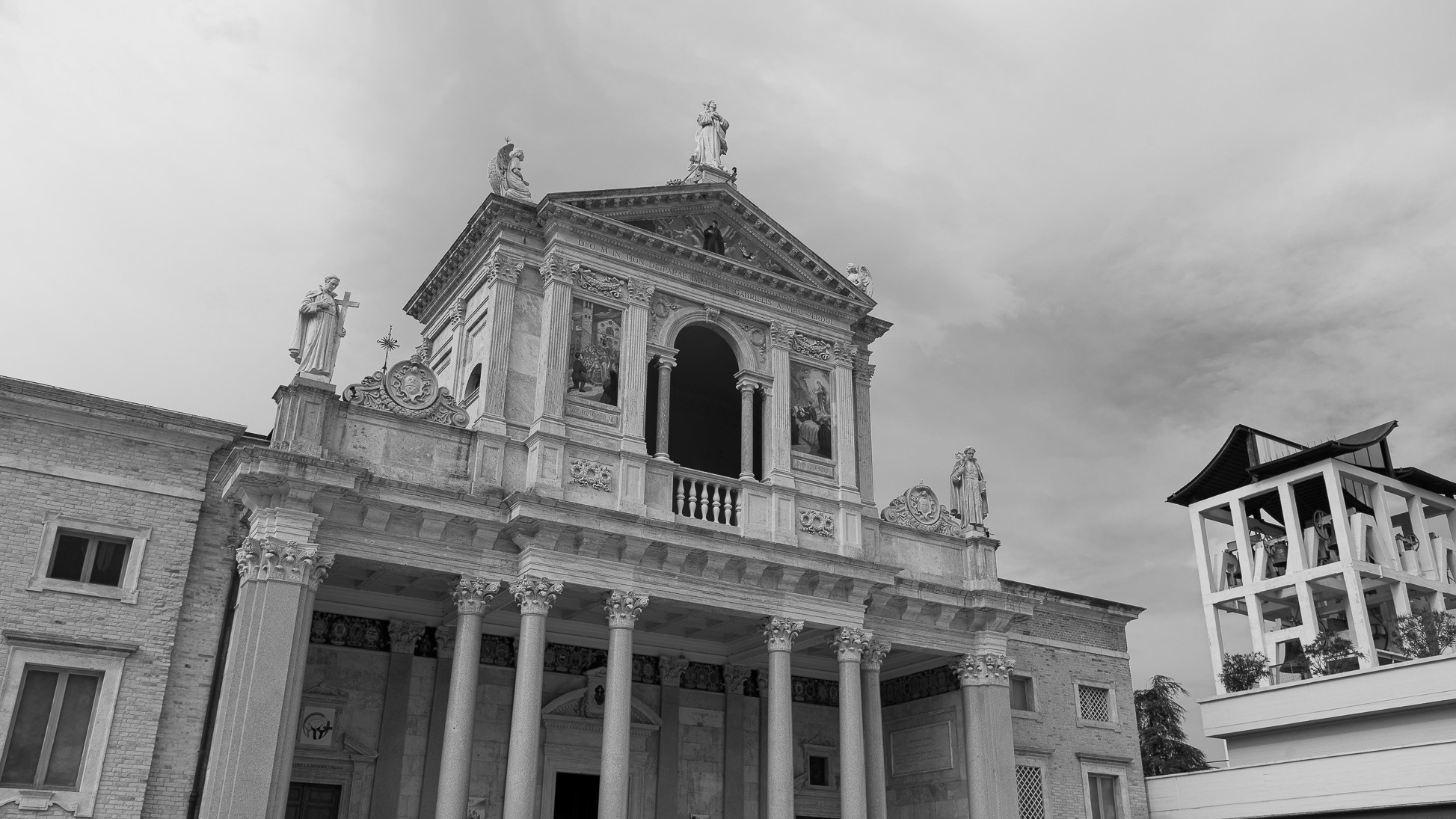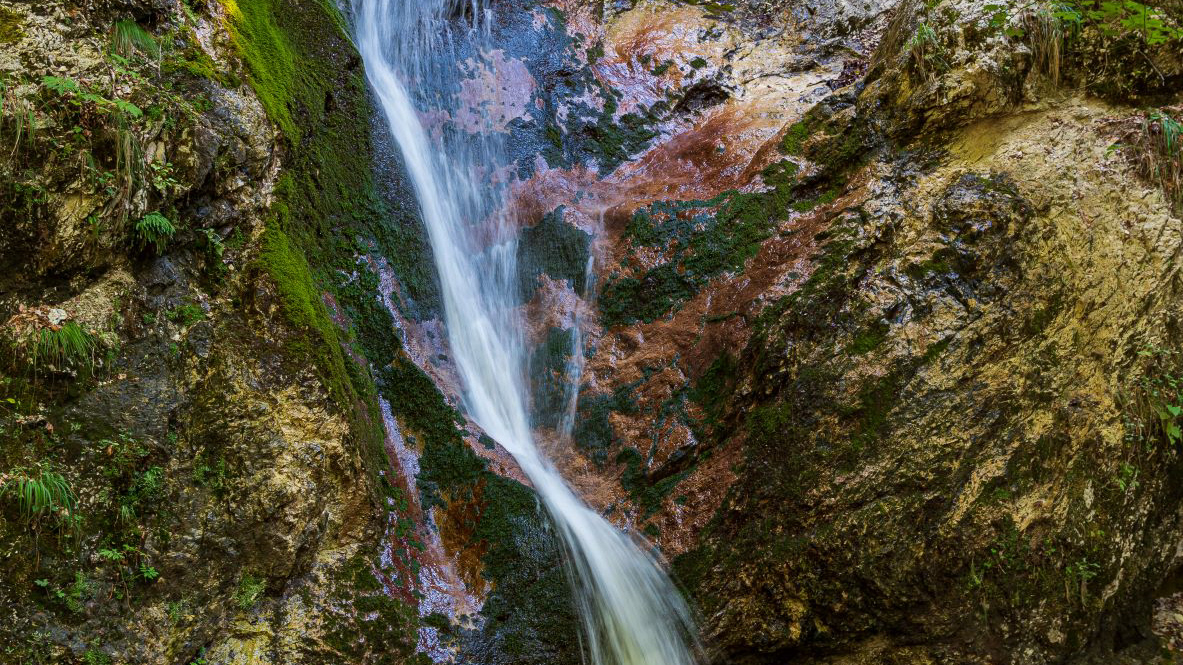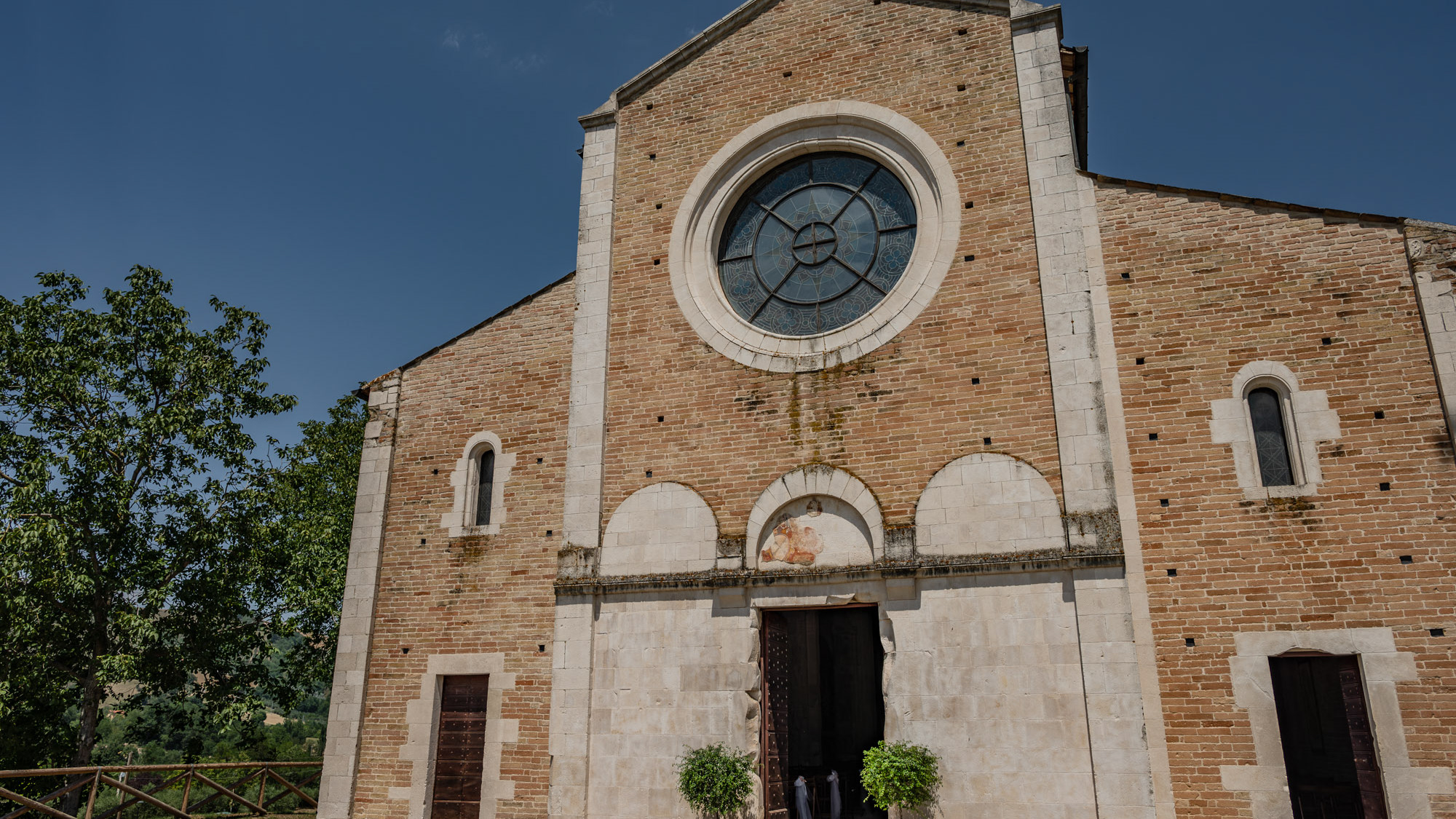Coppito (AQ) - Church of San Pietro Apostolo
2018
You may also like

2022
Isola del G. Sasso d’I. San G. dell'Addolorata
The sanctuary of S. Gabriele dell'Addolorata is a sanctuary of the Catholic Church located at the foot of the Gran Sasso d'Italia, in the municipality of Isola del Gran Sasso d'Italia.
2022
Civitella del Tronto. The Church of S. M. degli Angeli
Wedged between the alleys of the village, the Church of Santa Maria degli Angeli in Civitella del Tronto is, according to some historical sources, the oldest church in the town.

2021
La Camosciara Nature Reserve.
La Camosciara is an extensive nature reserve with trails for experienced hikers and beginners, suggestive views and wildlife. It is an integral part of the Abruzzo, Lazio and Molise National Park
2023
Stiffe Caves, Abruzzo, Italy
The Stiffe caves are a complex of karst caves located near Stiffe, in the territory of the municipality of San Demetrio ne' Vestini (AQ), in Abruzzo, included within the Sirente-Velino regional natural park. Testimony of a unique active resurgence in Italy, made accessible to the public since 1991, today they constitute one of the main naturalistic sites of the L'Aquila area, recording over 40,000 visitors annually. The Stiffe caves represent one of the best-known karst phenomena in central Italy. The complex has been used since the Bronze Age even if archaeological remains have been found inside it dating back to the Neolithic and Eneolithic. The presence of an underground stream that gave rise to the complex led, in 1907 and on the initiative of the Marquis Alfonso Cappelli, to the construction of a hydroelectric plant of which some remains are still visible today near the entrance to the cavities. In 1956, when the plant was dismantled, the first speleological explorations began; after a first visit in 1957, the following year it was the Marche Speleological Group of Ancona that went beyond the first natural siphon. Subsequently, the Roman Speleological Group and, starting from the eighties, the Aquilano Speleological Group continued the first exploration attempts. The speleological excursions were then followed by a process of valorisation of the site which led to the opening of the complex to the public in 1991. In 1994 a mixed group of speleologists from L'Aquila and France managed to access for the first time the unexplored area after the first waterfall while in 1996 the speleology museum named after Vincenzo Rivera was opened. A second extension of the tourist route, up to the current length of about 700 m, was made in 2007 with the opening of the second waterfall to visitors, while the extension of the explored part of the cavity exceeds one kilometre. From 1996 to 2018 the site was managed by the public-private company Progetto Stiffe S.p.A. while it is currently managed directly by the Municipality of San Demetrio ne' Vestini. The 2009 earthquake led to a closure of the caves for safety reasons; the complex was only reopened to the public in 2011.

2024
Castel Castagna. The church of Santa Maria di Ronzano
The church of Santa Maria di Ronzano stands on a hill in the Mavone valley. The building belonged to the abbey monastic complex of the Benedictine order who also had the convent here.

2023
Lama dei Peligni. Church of S. Nicholas and Clemente
Parish Church of the Child Jesus or of Saints Nicholas and Clemente. The parish church, originally dedicated to SS. Nicola and Clemente, was dedicated in 2015 to the Child Jesus, with a Decree of the archbishop mons. Bruno Strong. It is located in Piazza Umberto I, in front of the town hall. The original building dates back to the 16th century. An epigraph on the bell tower attests that the church was built in 1589 in the eighteenth century two windows were added on the facade for more light. The portico, located on the right side, dates back to the 20th century. The facade is rectangular. A tympanum dominates the portal, while a rose window is decorated with some little heads of angels. The portico has six bays with a round arch. The bell tower has three levels marked on the outside by a stringcourse frame. The interior has three naves, one central and two lateral. In the side aisles there are minor altars, with representations of saints. In the right aisle appear, in order, a niche with St. Sebastian, a first modern altar with an effigy of the Divine Mercy (recently set up), which houses the baptismal font, the latter covered by a late Gothic wooden chest dating back to the nineteenth century. Subsequently there is an altar with Our Lady of Sorrows and the dead Christ, then an altar with St. Anthony of Padua and finally a last one with the representation of the Sacred Heart of Jesus. In the left aisle there is, in order, a first altar with the Madonna del Rosario, then an altar with a painting of the Madonna delle Grazie. Subsequently an altar with S. Cesidio, followed by that in honor of S. Giuseppe. Finally there is a niche with S. Gabriele dell'Addolorata. At the back of the church, on the entrance door, there is a mezzanine supported by four columns, which houses a pipe organ built in the 17th century. At the end to the left of the central nave there is a wooden pulpit, with representations of the life of Jesus. The main altar is located at the end of the central nave, located in the center of the presbytery and is illuminated by the light from the dome. Behind the altar is the urn of the Holy Child, with the tabernacle below.
2023
Fara San Martino, Chieti. San Martino in Valle Abbey
The abbey of San Martino in Valle is a ruined Benedictine abbey near the Gole di Fara San Martino in Fara San Martino in the province of Chieti. The first historical sources on the Church located inside the Castle of Rocca S. Martino date back to 829 which list it among the possessions of the monastery of Santo Stefano in Lucania of Tornareccio, to which it had been donated by Pepin the Short. In 844 it passed under the control of the bishop of Spoleto and subsequently among the possessions of the abbey of San Liberatore a Majella. In 1044 the Theatine count Credindeo on his deathbed and for the redemption of his soul and his loved ones (recalling the capitulars of the Longobard king Liutprando) donated the church to the venerable priest Isberto so that he could endow it with an independent Benedictine monastery. In 1172 it became part of the diocese of Chieti. In 1222 Pope Honorius II confirmed the donation of Count Credindeo. The monastery was suppressed in 1452 by Pope Nicholas V and united with the Vatican Chapter, to return in 1789 to the archdiocese of Chieti. The definitive abandonment of the monastery took place on 8 September 1818 due to a flood that covered it with debris. The first excavations for its recovery took place in 1891, but only with those of 2009 were the remains of the structure fully brought to light. The remains of the abbey show a gate to an internal courtyard bordered by a three-arched portico, on the north side of which is a bell gable. The interior of the church had to have three naves with stone slab flooring. A wall with three arches separates the central nave from the northern one, from where one enters what must have been the initial nucleus of the church, dug into the rock, which suggests the birth of the place of worship as a hermitage.
2022
Abruzzo, Italy. Spectacular landscapes

2023
Alfedena. Church of Saints Peter and Paul
Church of Saints Peter and Paul (13th century), is located in the western part of the town, in Largo Don Filippo Brunetti, is characterized by a Romanesque-inspired façade (13th century), was restored following the damage of the Second World War. The interior of the church is the result of the reconstruction in 1954. The large mosaics on the facade and inside were created by Fausto Conti in the 1950s.

2024
Alfedena. The Castle
Alfedena Castle is the ruin of a castle dating back to the 10th-11th century in the Italian municipality of the same name of which an octagonal tower and parts of the walls remain. The ruins are located in a dominant position over the town, along Via Luigi De Amicis. The wall rests its foundations directly on the rocky thickness of the mountain hill overlooking Alfedena, has an irregular circular appearance, with multiple layers of walls, and double curtain walls with fornix-shaped entrances are preserved. The tower, although cut off at the top, is the best preserved element. The castle was founded around the 10th century by the Frankish lords, who divided the county of Marsi between them. In fact, Alfedena was among these possessions and, on top of the castle hill, a fortified tower was built, which communicated with those of the other villages, such as Scontrone, Castel di Sangro and Barrea. The tower with an irregular plan was rebuilt in the 13th century, as demonstrated by the octagonal structure, perhaps before it had a cylindrical base, the fact is that it testifies to the ancient function of the castle, which was that of lookout, guarding the town below, developed from the 14th century onwards, and together with the fortified enclosure, it also served as a shelter for citizens during periods of emergency, such as sieges. In the 14th century it was a fiefdom of Simone Di Sangro, the rich family from the Peligna valley, who had various fiefdoms, only to then pass to Giacomo Caldora in 1422. In 1456 a serious earthquake damaged the castle, which slowly lost the ancient central function of Alfedena, given that the main political and economic activities developed further and further downstream, along the Pescasseroli-Candela sheep track. The castle was enfeoffed during the Spanish viceroyalty to various lords, but it never returned to its ancient functions, it was damaged again by the Maiella earthquake of 1706, then by the earthquakes of 1915 (Marsica earthquake) and 1984, being restored only in the first years 2000, to be visited as a panoramic location, together with the octagonal tower.
